The LRT protocol innovates the staking participation model by providing liquidity to tokens representing RestakingETH, becoming an important force driving the prosperity of the Ethereum ecosystem for EigenLayer.
Author: Chandan | web3 Research
Translation: Blockchain in Plain Language
This is a brief introduction to AVS and node operators, various LRT protocols, and the latest developments in the field.
To become an Ethereum validator, you need two resources: 32 ETH and the hardware required to run node software. If you lack the required 32 ETH, you can entrust your funds to a liquid staking solution. These platforms will supplement your ETH and operate nodes on your behalf, sharing the rewards with you.
Currently, in the Liquid Restaking solution market, Lido holds a 30% market share, followed by Coinbase at 14%, Binance at 3.88%, and other providers.
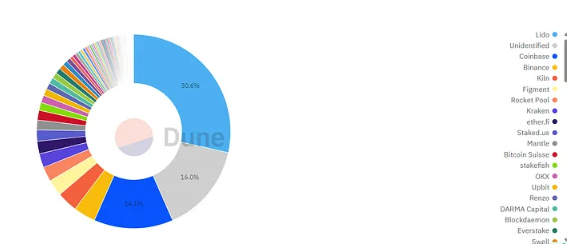
Liquid staking solutions such as Lido, Coinbase, and Rocket Pool offer derivative tokens representing users' staked ETH. Lido provides STETH, Coinbase provides cbETH, and Rocket Pool provides RETH. These liquid staking derivative tokens function similarly to other ERC20 tokens in the DeFi ecosystem, allowing users to provide liquidity on decentralized exchanges (DEXs), participate in lending protocols, and engage in various other DeFi activities.
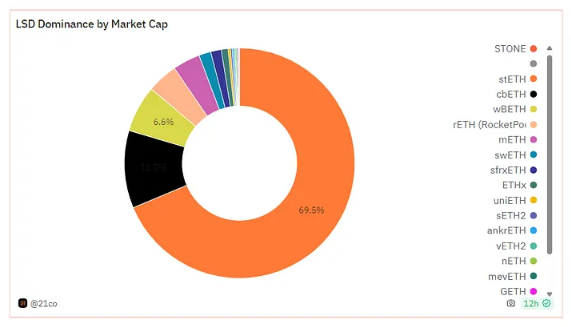
1. EigenLayer
EigenLayer is a restaking protocol that advances the liquid staking protocol. While liquid staking allows users to use their staked tokens in other DeFi protocols, EigenLayer makes it possible to restake ETH in other protocols requiring security. Restaking ETH using EigenLayer for security in other protocols is referred to as Active Validation Services (AVS).
Active Validation Services (AVS) use the EigenLayer protocol to integrate with Ethereum's security mechanisms, enhancing validation for blockchain applications without their own consensus mechanisms.
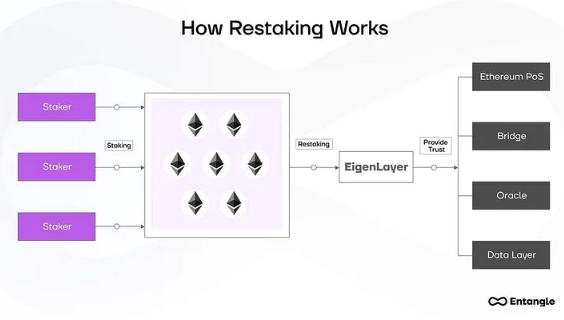
ETH is staked on both the Ethereum network and Active Validation Services (AVS). Notable projects such as AltLayer, Celo, Espresso, EigenDA, Hyperlane, Mantle, and Polyhedra plan to participate as early AVS adopters in EigenLayer. Staked ETH can earn rewards from two staking types, although it is subject to different penalty conditions.
How can ETH be staked on both the Ethereum network and other AVS protocols simultaneously?
Ethereum validators can set withdrawal credentials, allowing ETH withdrawal, including EigenLayer's smart contract. This enables Ethereum validators to participate in AVS validation through EigenLayer's restaking, run the required client, and set the withdrawal credentials to EigenLayer's smart contract. If the validator violates AVS penalty conditions, EigenLayer has the right to penalize the ETH, subjecting the restaked ETH to two sets of penalty conditions simultaneously.
2. Node Operators within EigenLayer
Node operators protect AVS transactions by restaking their ETH on EigenLayer and earn additional validation rewards from AVS operations on Ethereum. This provides validators with an economically incentivized ecosystem to support the AVS network.
1) What is the Liquid Restaking Token (LRT) protocol?
The Liquid Restaking Token (LRT) protocol aims to unlock the liquidity of ETH restaked on EigenLayer, similar to how liquid staking tokens unlock staked ETH on Ethereum. From an end-user perspective, the LRT protocol addresses several inconveniences encountered when interacting directly with EigenLayer.
2) Inconveniences of using EigenLayer directly
Node operator selection: End-users find it challenging to select node operators on EigenLayer due to the complexity of considering risks and returns.
Compound interest: Users must manually compound rewards in EigenLayer to benefit from compounding interest, incurring expensive gas fees.
Lack of liquidity: ETH restaked on EigenLayer lacks liquidity and cannot be easily used elsewhere.
The LRT protocol addresses these issues by standardizing rewards and risk allocation by restaking deposited ETH on various operators within EigenLayer. Additionally, it provides users with tokenized representations of their restaked ETH and rewards, enabling them to leverage these tokens for additional benefits in other DeFi protocols.
3. Different types of LRT protocols:
1) Native liquid staking:
Native Liquid Restaking protocols require all the functionalities of traditional liquid staking protocols and an additional layer to create EigenPods for restaking with different EigenLayer node operators.
Ether.fi:
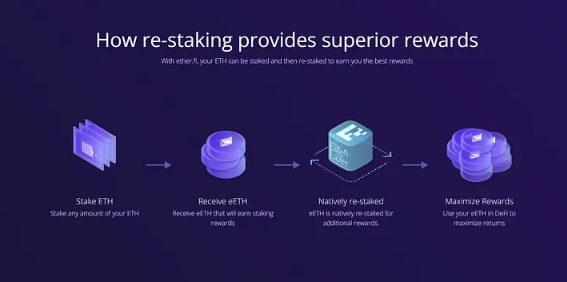
This protocol allows users to mint eETH by staking their ETH, which is the first native liquid restaking token on Ethereum. By minting eETH, users can benefit from rewards generated from staking and restaking activities conducted through Ether.fi.
Ether.fi is the only protocol that allows stakers to control the keys, reducing counterparty risk with node operators and the protocol.
Ether.fi operates Operation Solo Staker, further decentralizing Ethereum by launching nodes in different geographical regions.
Puffer
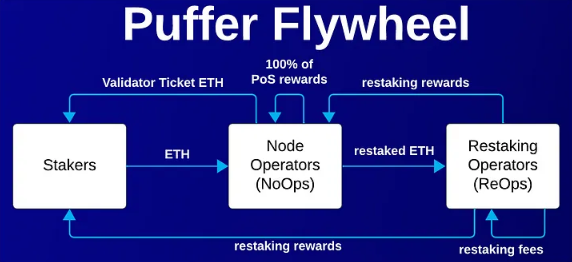
Puffer is a decentralized native liquid staking protocol (nLRP) built on EigenLayer, making native restaking on EigenLayer more accessible. It allows anyone to run Ethereum's Proof of Stake (PoS) validators and increase their rewards simultaneously.
Capital efficiency: Running validators requires less than 2 ETH. Penalty protection: First anti-penalty hardware support. MEV autonomy: Node operators can choose their own MEV strategy.
Swell allows users to earn pass by staking or restaking ETH, while also receiving blockchain rewards and restaking AVS rewards. In return, users receive a profit-generating Liquid Staking Token (LST or LRT), which they can hold or participate in the broader DeFi ecosystem for additional returns.
2) Basket-based LRTs:
Allows users to stake various tokens and receive a single certificate token representing a basket of Liquid Staking Tokens (LSTs) for restaking. Dealing with different tokens exposes users to multiple counterparty risks.
Renzo
EigenLayer's strategy manager, guiding users in restaking strategies.
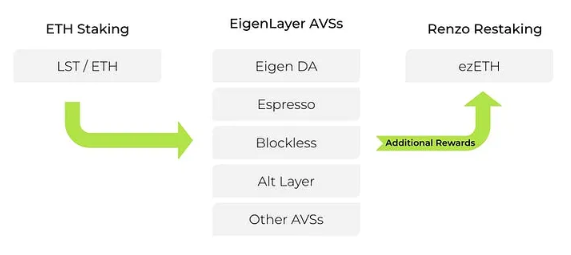
Key product: ezETH, representing a liquid token for user restaking positions.
Function: Users can deposit liquid staking tokens (stETH, rETH, cbETH) in exchange for ezETH. For each LST or ETH deposited on Renzo, an equivalent amount of ezETH is minted.
Kelp DAO

rsETH is a single liquid restaking token applicable to all acceptable ETH LSTs. Kelp's rsETH is a liquid restaking token (LRT) providing liquidity for non-liquid assets deposited on restaking platforms like EigenLayer.
3) Isolated LRTs
Involves exchanging a specific type of Liquid Staking Token (LST) for the corresponding specific type of Liquid Restaked Token (LRT). By isolating the relationship between LSTs and LRTs, counterparty risk is minimized.
Astrid Finance
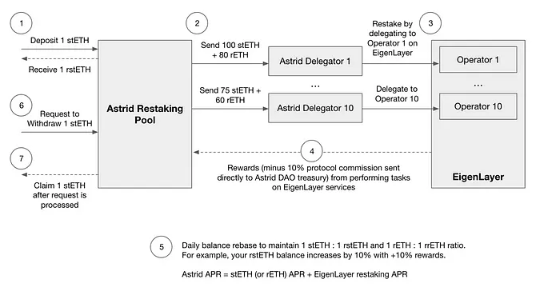
Users deposit LSTs (stETH, rETH, or cbETH) into the restaking pool and receive the corresponding Astrid liquid restaking token or LRTs (rstETH, rrETH, rcbETH). The aggregated LSTs are restaked on EigenLayer and delegated through multiple operators elected by Astrid DAO through voting. Rewards are distributed through balance rebase for compounding and automatically adjusting the user's balance.
These protocols cater to different user preferences and risk allocations, providing flexibility in managing staked assets while considering factors such as counterparty risk and reward structure.
4) Latest Developments in LRT Protocols and EigenLayer Domain
1) Expansion of AVS Providers
The number of AVS projects listed on the EigenLayer website has reached approximately 76, with new launches every day.
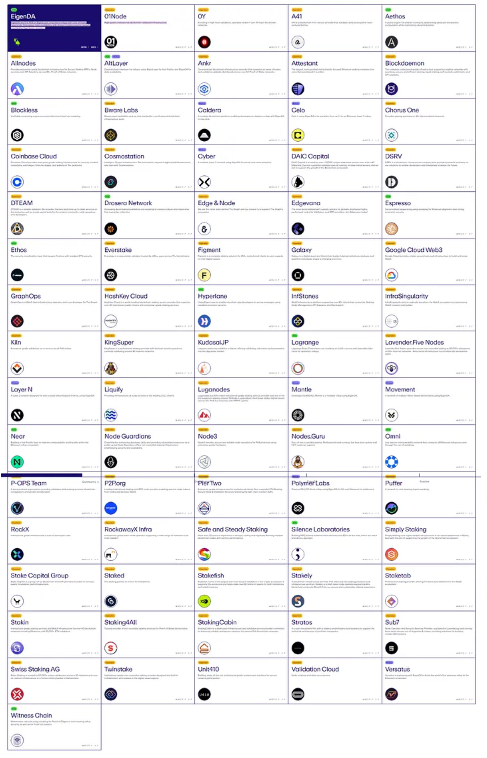
2) Growth of Liquid Restaking Protocols
Liquid Restaking protocols in projects such as Ether.fi, Puffer, and Swell have gained widespread adoption, attracting over $50 billion in total locked value (TVL).
3) Increase in EigenLayer's TVL
EigenLayer's total locked value (TVL) has increased from $20 billion in January to $110 billion, a fivefold growth.
4) Innovative Token Models
Various types of LRT protocols have emerged, including native liquid restaking (e.g., Ether.fi), basket-based LRTs (e.g., Kelp DAO), and isolated LRTs for specific Liquid Staking Tokens (LSTs). These diverse models provide users with multiple options for restaking assets while managing counterparty risk and maximizing returns.
5) Conclusion
Similar to how Liquid Restaking Tokens have become the most commonly used tokens in decentralized exchanges and lending protocols, we can expect the same for LRT tokens. Many projects have created different types of liquid restaking tokens, each with its own advantages and disadvantages.
While this does introduce additional leverage, the core increase in risk comes from new unlocking conditions. This risk is not as complex or dangerous as the community might perceive. If LRT protocols become more active, despite Ethereum's massive market value, it can still generate significant value, and we can expect the Ethereum DeFi ecosystem to become more active.
Source: https://0chandan.medium.com/brief-introduction-to-avss-and-node-operators-6c785195a0af
免责声明:本文章仅代表作者个人观点,不代表本平台的立场和观点。本文章仅供信息分享,不构成对任何人的任何投资建议。用户与作者之间的任何争议,与本平台无关。如网页中刊载的文章或图片涉及侵权,请提供相关的权利证明和身份证明发送邮件到support@aicoin.com,本平台相关工作人员将会进行核查。




